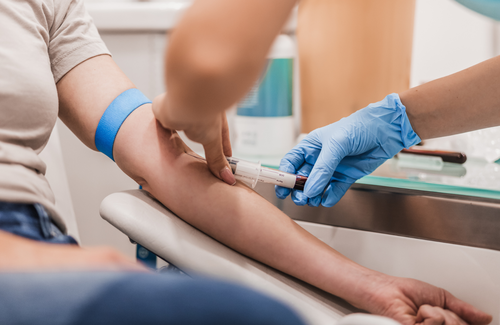
Switching from tenofovir disoproxil fumarate (TDF) to tenofovir alafenamide (TAF) is associated with an increase in lipids, but this is reversed when switching back to TDF, German investigators report in the December 1 issue of AIDS. Lipids increased in over two-thirds of those making the switch, but both cholesterol and triglyceride levels fell back again after reverting to TDF, especially in individuals who had experienced the biggest increases in lipids when switching to TAF.
Half the study participants switched back to TDF when cheap generic versions of the drug became available. Reversion from TAF to the older formulation of tenofovir by people experiencing elevations in lipids could therefore have potential clinical benefits for the individuals involved and also help ease the financial pressure on cash-strapped healthcare providers.
“The results of our study confirm the reversible, pharmacological effect on lipid profile of a switch from TDF to TAF and back,” comment the investigators. “Changes observed in cholesterol in our study are similar to those reported with less potent statin agents.”
Cardiovascular disease is now a leading cause of serious illness and death among people with HIV. This has been linked to elevations in lipids. This means that prevention of cardiovascular disease, including lowering of lipids, is now a priority of HIV care.
TDF, the older formulation of tenofovir, has long been a mainstay of antiretroviral therapy. Unlike many other anti-HIV drugs, it does not cause increases in lipids and may even have a beneficial effect on cholesterol and triglyceride profiles. However, TDF is not side-effect free and has been associated with reductions in bone mineral density and renal dysfunction. TAF, the newer formulation of tenofovir, is gentler on the bones and kidneys, but previous research suggests that, when compared to TDF, it causes increases in total cholesterol, LDL (“bad”) cholesterol and triglycerides.
The investigators wanted to see if lipid increases accompanying a switch from TDF to TAF were reversible when therapy was switched back to TDF. They therefore designed a retrospective study involving 385 people receiving HIV care in Dusselfdorf who made such a switch. Other components of their antiretroviral regimen and lipid-lowering therapies remained stable. This meant that the investigators could be confident that any lipid changes were related to the use of the different formulations of tenofovir.
Lipid levels were measured just before therapy was changed from TDF to TAF. The researchers reported on cholesterol and triglyceride changes 12 and 24 weeks after this change in therapy. Data were also presented on lipid changes among the people who switched back to TDF, again at 12- and 24-week follow-up intervals.
All participants had an undetectable viral load. The mean age at baseline was 49 years, 90% were male, average BMI was 23.9kg/m2 (and therefore within the healthy range) and mean CD4 cell count was 752.
The average duration of therapy with TDF was six years. A minority (13%) was taking lipid-lowering therapy, 7% had total cholesterol above 240mg/dl, and a fifth had triglycerides above 200mg/dl.
"Both cholesterol and triglyceride levels fell back again after reverting to TDF, especially in individuals who had experienced the biggest increases when switching to TAF."
Mean total cholesterol before the switch to TAF was 186mg/dl. Increases were recorded after the change at both the 12-week (206mg/dl) and 24-week (204mg/dl) follow-up points. Increased total cholesterol after replacing TDF with TAF was especially associated with older age and being overweight.
Similarly, triglycerides increased from a mean of 153mg/dl before the treatment change to 176mg/dl at both post-switch follow-up intervals.
Detailed information on lipid profiles was available for 70 participants. This showed significant increases after changing to TAF in LDL cholesterol (p < 0.005) and HDL cholesterol (p < 0.001). The total cholesterol/HDL ratio remained unchanged.
After the introduction of generic TDF in Germany, half the participants switched back to TDF. These individuals had experienced increases in lipids in line with those seen in the overall study population after switching to TAF. However, 24 weeks after switching back to TDF, total cholesterol had fallen back to a mean of 185mg/dl (p < 0.001) and triglycerides had declined to a mean of 157mg/dl (p < 0.05).
Two-thirds of individuals had increases in total cholesterol of at least 10mg/dl after changing from TDF to TAF, with 31% experiencing an increase of over 20mg/dl. Individuals with the highest increases in total cholesterol (30mg/dl vs below 10mg/dl) after the first switch showed the most pronounced decreases after changing back to TDF.
There was no evidence that being on lipid-lowering drugs or use of other anti-HIV agents had an effect on these results.
“Switching from TDF/emtricitabine to TAF/emtricitabine lead to marked and reversible increase in total cholesterol and other proatherogenic lipid fractions in a relevant portion of patients,” conclude the authors.
Milinkovic A et al. Reversible effect on lipids by switching from tenofovir disoproxil fumarate to tenofovir alafenamide and back. AIDS 33: 2387-2391, 2019.
DOI: 10.1097/QAD.0000000000002350

